Virgin Orbit reduces launch forecast while increasing per-launch revenue
Sunday, 14 August 2022 21:39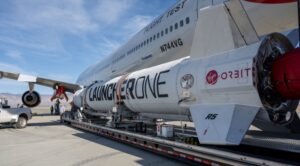
Virgin Orbit now expects to perform four launches this year, at the low end of earlier projections, but with a higher per-launch revenue.
The post Virgin Orbit reduces launch forecast while increasing per-launch revenue appeared first on SpaceNews.
Op-ed | Why a ‘hybrid’ space architecture makes sense for economic and national security
Sunday, 14 August 2022 20:00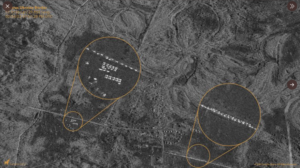
Once-in-a-generation advances in commercial technology will fundamentally strengthen the U.S. economic and security posture in space
The post Op-ed | Why a ‘hybrid’ space architecture makes sense for economic and national security appeared first on SpaceNews.
NASA seeks student ideas for extracting, forging metal on the Moon
Sunday, 14 August 2022 11:40 NASA's 2023 annual Breakthrough, Innovative and Game-Changing (BIG) Idea Challenge asks university students to design a metal production pipeline on the Moon - from extracting metal from lunar minerals to creating structures and tools. The ability to extract metal and build needed infrastructure on the Moon advances the Artemis Program goal of a sustained human presence on the lunar surface.
NASA's 2023 annual Breakthrough, Innovative and Game-Changing (BIG) Idea Challenge asks university students to design a metal production pipeline on the Moon - from extracting metal from lunar minerals to creating structures and tools. The ability to extract metal and build needed infrastructure on the Moon advances the Artemis Program goal of a sustained human presence on the lunar surface. Shenzhou XIV astronauts to conduct their first spacewalk in coming days
Sunday, 14 August 2022 11:40 China's Shenzhou XIV astronauts will conduct extravehicular activities (EVAs) for the first time in the next few days, China Media Group reported on Saturday.
The three-member crew has been working and living in orbit for 70 days since they were sent into space onboard the Shenzhou XIV spaceship and entered China's space station.
The combination of China's space station is currently
China's Shenzhou XIV astronauts will conduct extravehicular activities (EVAs) for the first time in the next few days, China Media Group reported on Saturday.
The three-member crew has been working and living in orbit for 70 days since they were sent into space onboard the Shenzhou XIV spaceship and entered China's space station.
The combination of China's space station is currently NASA explains strange stringy object photographed by Perseverance rover
Sunday, 14 August 2022 11:40 One photo taken recently by NASA's Perseverance rover on Mars showed an unusual noodle-like object lying on the surface of the Red Planet, but scientists have an explanation.
The photo was taken on July 12 and depicted what looked like a tangled web of string in the lower right corner. The image led some to question what the object is, particularly when a photo taken four days later rev
One photo taken recently by NASA's Perseverance rover on Mars showed an unusual noodle-like object lying on the surface of the Red Planet, but scientists have an explanation.
The photo was taken on July 12 and depicted what looked like a tangled web of string in the lower right corner. The image led some to question what the object is, particularly when a photo taken four days later rev Brightest stars in the night sky can strip Neptune-sized planets to their rocky cores
Sunday, 14 August 2022 11:40 Over the last 25 years, astronomers have found thousands of exoplanets around stars in our galaxy, but more than 99% of them orbit smaller stars - from red dwarfs to stars slightly more massive than our sun, which is considered an average-sized star.
Few have been discovered around even more massive stars, such as A-type stars - bright blue stars twice as large as the sun - and most of the
Over the last 25 years, astronomers have found thousands of exoplanets around stars in our galaxy, but more than 99% of them orbit smaller stars - from red dwarfs to stars slightly more massive than our sun, which is considered an average-sized star.
Few have been discovered around even more massive stars, such as A-type stars - bright blue stars twice as large as the sun - and most of the Hubble sees red supergiant star Betelgeuse slowly recovering after blowing its top
Sunday, 14 August 2022 11:40 Analyzing data from NASA's Hubble Space Telescope and several other observatories, astronomers have concluded that the bright red supergiant star Betelgeuse quite literally blew its top in 2019, losing a substantial part of its visible surface and producing a gigantic Surface Mass Ejection (SME). This is something never before seen in a normal star's behavior.
Our Sun routinely blows off p
Analyzing data from NASA's Hubble Space Telescope and several other observatories, astronomers have concluded that the bright red supergiant star Betelgeuse quite literally blew its top in 2019, losing a substantial part of its visible surface and producing a gigantic Surface Mass Ejection (SME). This is something never before seen in a normal star's behavior.
Our Sun routinely blows off p SpaceX launches 46 new Starlink satellites into orbit
Sunday, 14 August 2022 11:40 SpaceX launched its next round of Starlink satellites into low-Earth orbit aboard a Falcon 9 rocket lifting off from the Vandenberg Space Force Center in California on Friday afternoon.
The Elon Musk-owned private space company plans to add 46 new satellites to its constellation of small satellites around the world in order to allow access to the Internet regardless of how remote the locat
SpaceX launched its next round of Starlink satellites into low-Earth orbit aboard a Falcon 9 rocket lifting off from the Vandenberg Space Force Center in California on Friday afternoon.
The Elon Musk-owned private space company plans to add 46 new satellites to its constellation of small satellites around the world in order to allow access to the Internet regardless of how remote the locat Chinese commercial carrier rocket Smart Dragon-3 completes ground tests
Sunday, 14 August 2022 11:40 China's new carrier rocket Smart Dragon-3 (SD-3), designed for commercial use, has completed large-scale ground tests, its developer said on Thursday.
The rocket was developed by the China Rocket Co. Ltd., which is affiliated with the China Academy of Launch Vehicle Technology (CALVT). It is a four-stage solid-propellant carrier rocket.
The rocket is the largest of the SD series and
China's new carrier rocket Smart Dragon-3 (SD-3), designed for commercial use, has completed large-scale ground tests, its developer said on Thursday.
The rocket was developed by the China Rocket Co. Ltd., which is affiliated with the China Academy of Launch Vehicle Technology (CALVT). It is a four-stage solid-propellant carrier rocket.
The rocket is the largest of the SD series and Harvest from heavenly breeding
Sunday, 14 August 2022 11:40 When China's Shenzhou-14 spaceship returns to Earth late this year, it will bring home some unusual packages - brewer's yeast grown in space.
It will be part of the harvest of a 6-month-long breeding experiment aboard the Tiangong space station, which is under construction. Scientists say that the microorganism, exposed to deep space, will induce genetic mutations that may create superior
When China's Shenzhou-14 spaceship returns to Earth late this year, it will bring home some unusual packages - brewer's yeast grown in space.
It will be part of the harvest of a 6-month-long breeding experiment aboard the Tiangong space station, which is under construction. Scientists say that the microorganism, exposed to deep space, will induce genetic mutations that may create superior U.S. Army hands over satellite operations to Space Force, but keeps a foothold in space
Sunday, 14 August 2022 08:15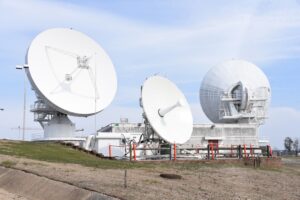
Satellite ground stations that for decades have been operated by the U.S. Army will be officially handed over to the Space Force on Aug. 15.
The post U.S. Army hands over satellite operations to Space Force, but keeps a foothold in space appeared first on SpaceNews.
NASA, Space Force resolve SLS flight termination system issue
Saturday, 13 August 2022 20:43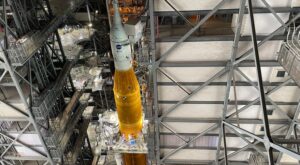
NASA and the U.S. Space Force have resolved an issue with the flight termination system on the Space Launch System that could have cut short the vehicle’s inaugural launch campaign.
The post NASA, Space Force resolve SLS flight termination system issue appeared first on SpaceNews.
US astronaut Jessica Watkins sets sights on Moon... and Mars
Saturday, 13 August 2022 06:59
If you had the choice, would you rather go to the Moon or Mars?
The question is utterly theoretical for most of us, but for US astronaut Jessica Watkins, it hits a bit differently.
"Whichever comes first!" Watkins says with a laugh, in a lengthy interview with AFP from her post on the International Space Station (ISS).
At 34, Watkins has many years ahead of her at the US space agency NASA, and could very well be one of the first women to step foot on the Moon in the coming years, as a member of the Artemis team preparing for upcoming lunar missions.
Missions to Mars are off in the future, but given that astronauts often work into their 50s, Watkins could conceivably have a shot.
Either way is just fine, she says.
Harris says U.S. to update commercial space regulations
Friday, 12 August 2022 20:46
Vice President Kamala Harris said Aug. 12 that the National Space Council will work to revise commercial space regulations that have become “simply outdated” as the industry evolves.
The post Harris says U.S. to update commercial space regulations appeared first on SpaceNews.
Anuvu buys Signal Mountain Networks to expand government business
Friday, 12 August 2022 17:16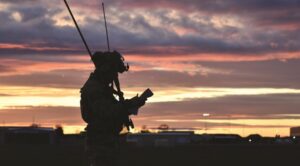
Mobile satellite connectivity specialist Anuvu is looking for more avenues for growth with the acquisition of Signal Mountain Networks, a satellite communications provider to the U.S. government.
The post Anuvu buys Signal Mountain Networks to expand government business appeared first on SpaceNews.

